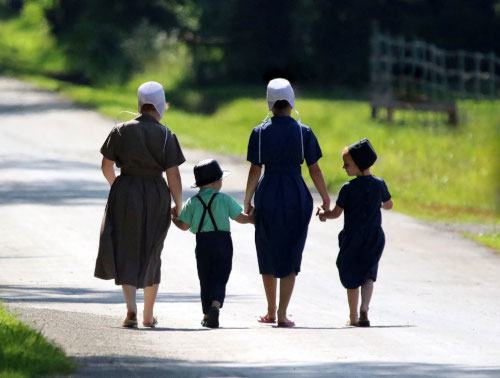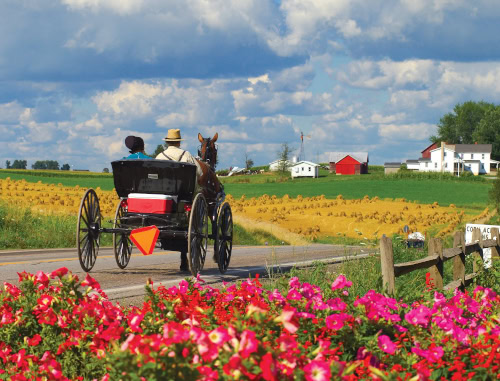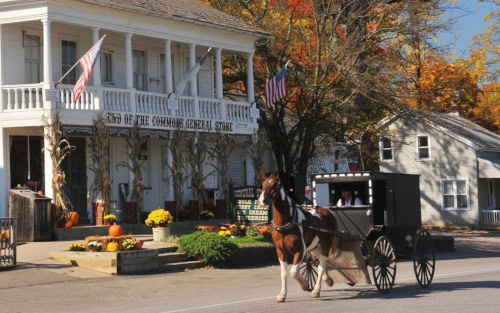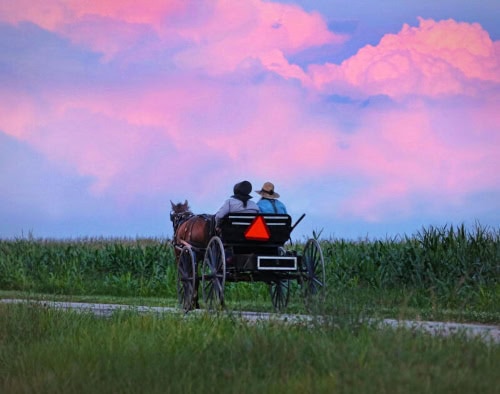Meet our Amish Neighbors
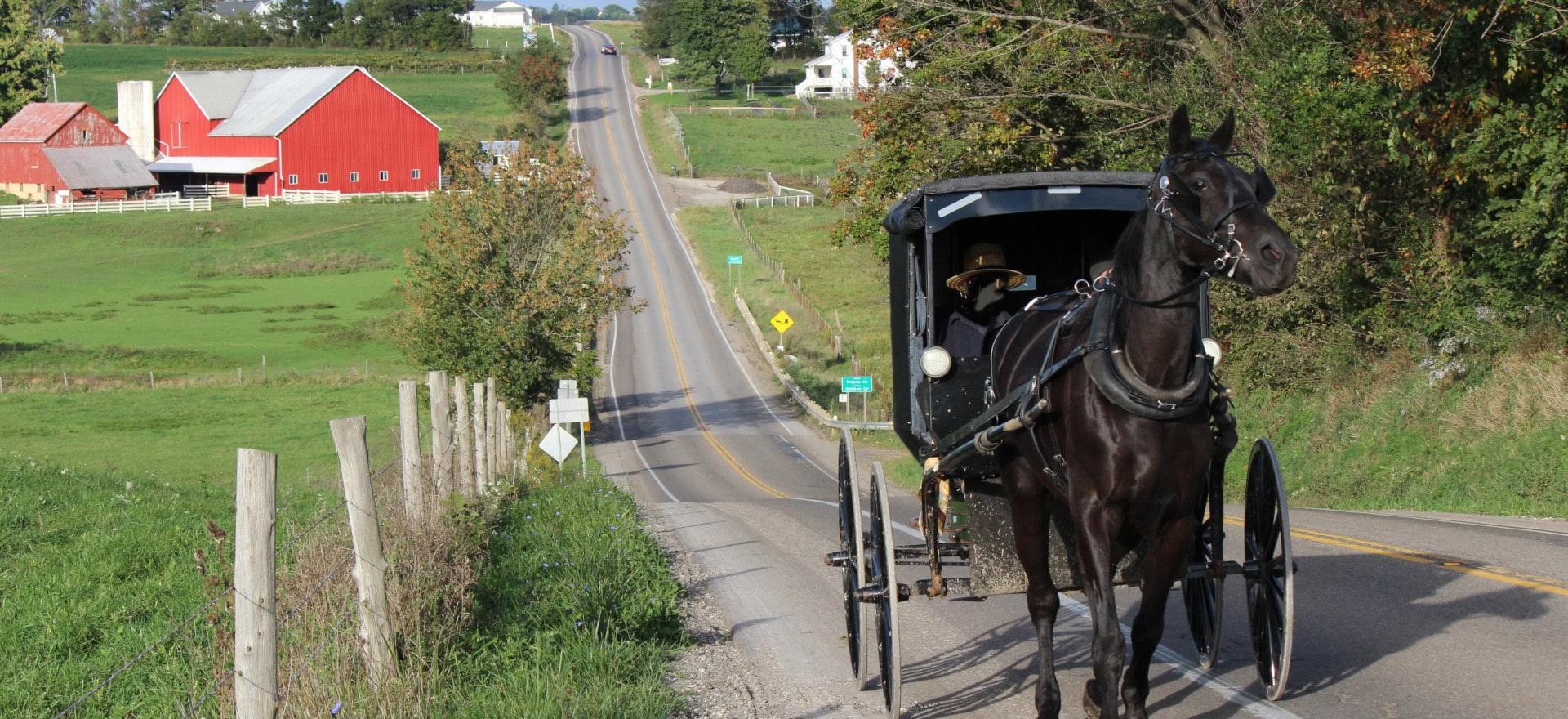
Meet Our Amish Neighbors
These Amish FAQs have been provided to us by the Geauga Amish Historical Library. Visit them in person to learn more about the Amish culture and their history. Click here for their address & hours!
Yes. They confess the Christian faith i.e. a belief in a personal relationship with Jesus Christ as the son of God who died for the sins of the world.
‘Pennsylvania Dutch’ is what it is commonly called although it is a German dialect. It is not a written language, and variations may differ not only from one community to the next but from one family to another. Children do not learn English until they begin attending school at the age of six, although they will already have picked up a bit from older family members.
Scripture readings in their church services are read from Luther’s translation, so the Amish schools also have German lessons for their older students based on the Lutheran German.
The Amish have their own private schools where they educate only through grade 8. Their lessons consist of the basics i.e. reading, writing, arithmetic and subjects such as history, social studies and geography. They do not have subjects such as science or physics, not because they don’t believe in them, but simply because they don’t see it as necessary for their lifestyles. This is also the same reason why they graduate after 8 grades. Their teachers are generally young, unmarried women who have had no training; however, students do have to meet state-standards on testing.
An Amish child desiring higher education is a rarity. The answer to this lies in what the Amish value as a culture. In larger society, people with years of education and the degrees to show it have status and are very much respected. In the Amish culture, this respect is reserved for individuals who are not afraid of physical labor, who create with their hands and as a result have something practical and tangible to offer to the community. Amish children look to their parents and other elders for defining values, as do all children in all cultures. As a result, the question of higher education very seldom is a question.
Occasionally, an unmarried woman may seek a G. E. D. in order to get a better job to support herself, but education beyond this is not supported.
The greater Geauga County area has about 160 church districts. Each district is formed geographically and has an average of 30 families. Each family takes turns hosting services in their home. By halving the total number of districts with each group of 80 having services on alternating Sundays, this allows members and ministers to visit other districts’ services that are hosted by other family members and friends.
Rumspringa (pronounced room’-shpring-ah) is a Pennsylvania Dutch word meaning jumping or running around. The term has been much sensationalized by the media as a time in an Amish teenager’s life where they are “set free” to enjoy the world before making a decision whether to join the church or not but the reality is not quite as exciting.
Rumspringa starts at age 16 to 17 where a teenager is free to spend time with his peers on the weekends and to date (which consists of a boy driving a girl home from an event on Sunday evenings). Most of these events are chaperoned and usually include playing games, dinner and hymn singing.
Drinking, drugs and partying do exist among some groups although these are in the minority. Even though these teenagers are not baptized, therefore not accountable to the church, they still have parents who expect house rules to be respected.
If an Amish person and a non-Amish person wish to marry, the Amish person needs to leave or the other needs to join the Amish church. The process of joining the Amish church for someone not born into the community takes a year or two. If the Amish person has not yet been baptized, he or she faces no repercussions from the church if they decide to leave the community. If they have been baptized prior to their decision to leave, they will be shunned.
If an Amish person decides to leave the church after they have been baptized, shunning will occur. What this officially means is that although they would be welcome at social and church functions, they would no longer be able to participate in church member’s meetings, partake in communion or benefit from the various non-profit financial funds the community has to assist its members.
The family and friends of the member who decides to leave make their own decision as to what kind of contact they would like to keep with their loved ones. This can vary, according to personal convictions.
A shunned person is always welcomed back if they wish to return.
No. There was never a time when the Amish had arranged marriages.
A man is clean-shaven before marriage. Immediately after becoming married, he will grow a beard. There is no way to tell if a woman is married or not.
Buttons were seen as an unnecessary adornment and no Amish person would accept them at first. Now children’s clothes have them as do the men on their everyday shirts though they still sport hook and eyes on their Sunday church suits. Buttons are accepted on jackets and coats for men and women. So why not the women’s dresses? The answer may be more practical than you think. Pins allow for more adjustment of the dress in weight loss and gain. Also, zippers and other fasteners tend not to do so well in a wringer washer. Most of the pins used are safety pins, to minimize accidental sticking.
The Amish women wear head coverings because of 1 Corinthians 11:3-16. Verses 5 and 6 state “And every woman who prays or prophesies with her head uncovered dishonors her head-it is just as though her head were shaved. If a woman does not cover her head, she should have her hair cut off; and if it a disgrace for a woman to have her hair cut or shaved off, she should cover her head.” NIV
The everyday covering the women and girls wear is called a ‘kopp’ or cap. In Geauga County, the young girls will wear a black one until they graduate from school and from then on will wear a white one. All females have a heavier black covering they call a bonnet that will be worn over their regular cap when going to church or town. Styles and colors in coverings vary among different communities.
No. Although some may prefer a more natural or herbal approach to health care, they will accept all medical treatments and life-saving procedures.
Pacifism is one of the principles of the Amish culture and beliefs. During the time of Napoleon, where many soldiers were required to wear mustaches, Amish men began shaving theirs to differentiate themselves from the military.
Yes. As citizens, they pay every tax, including public school taxes, although the great majority don’t send their children to public school. The only exception to this is the Social Security tax. If an Amish person has another Amish person as an employer, none are required to pay social security. Of course, this also means they won’t be able to draw later in life.
Yes and no. For most Amish groups, it’s a personal choice whether to vote or not. The Amish that vote normally only do so on a local level, i.e. township and county issues. The line is usually drawn at voting for persons who would have the power to pardon and condemn.
Yes. An Amish person is held liable for breaking the law just as their non-Amish fellow citizens including getting a DUI with a horse and buggy.
The Amish do not view these things as evil in and of themselves. Rather, they wish to protect their culture, which they view as a good way to live the Christian faith and to continue practicing family values based on that faith. Vehicle ownership would naturally scatter them in a wider geographical area per community and they would stand to lose a good portion of that close-knit aspect that goes along with living in close proximity to their neighbors.
The Amish did not survive in Europe because they never lived in compact settlements. Each family became a social unit unto itself and thus were not able to withstand the pressure toward conformity to the general culture. The Amish do accept some forms of electricity. Some have lithium batteries for lighting their homes which they charge with a solar panel. Grid electricity is viewed as unnecessary. They recognize the human tendency to test limits and wish to avoid the temptation of easy access to conveniences that would come along with wiring their homes. Again, modern conveniences are not seen as evil, but as unconducive to the lifestyle they wish to preserve for their children.
Having a personal photo taken is viewed as a source of potential pride and thus to be avoided. Some of the more conservative affiliations also consider a photo as a graven image, therefore breaking the 2nd commandment.
The internet. Although some Amish use the internet for business and even advertise their services online, this is usually done with a non-Amish partner or through a third party. Internet is forbidden in the home; however, it remains a challenge. Many unbaptized teenagers will have smart phones against their parents’ wishes. Some parents who decide to “let teenagers be teenagers” are not fully aware of the dangers of the internet. And of course, the adults can be susceptible to the temptation as well.
